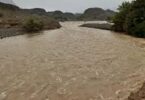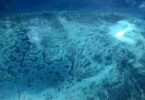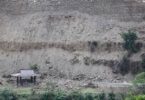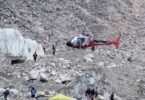Montevideo (AFP): Drought-parched Uruguay is thirsty, and in one of the main leafy parks of its capital a new sight is appearing: heavy equipment drilling in an emergency quest for more water.
For the past 10 days, the noisy machinery has added to the urban soundscape.
“You always have to have a Plan B,” said Valeria Arballo, a geologist supervising the hunt for underground water.
AFP caught up with her in Batlle Park, a 150-acre (60 hectare) green “lung” in the capital that is the site of Estadio Centenario, the historic palace of football that was the main stadium for the 1930 World Cup.
Now, noisy heavy equipment seeks to tap underground fresh water known to be there, eventually to supply local hospitals and schools.
“The drilling is being done in the city of Montevideo due to the water crisis,” says Arballo, project director of the Underground Water Division of OSE, the state potable water enterprise.
Two new wells — one 138-feet deep (42 meters) and the other 300 feet (90 meters) — are already producing water, which is treated before human consumption. Others may soon be drilled.
Montevideo, a city of 1.8 million, has traditionally relied on surface water. But the past three years of drought have been the worst in seven decades of record keeping, so OSE decided to tap its underground supply.
– ‘You can’t drink it’ –
As the drilling gets underway, tanker trucks carrying fresh water from a plant east of Montevideo arrive at Batlle Park, where it is then transferred to smaller trucks and moved on to health clinics and other institutions in need.
The main source for Montevideo’s fresh water is the Paso Severino reservoir, 50 miles (85 kilometers) north of the capital. But it is now at historic lows.
On June 7, the reservoir contained 4.4 million cubic meters of water, a tiny fraction of its 67 million cubic meter capacity, according to official figures.
Montevideo consumes an average of 550,000 cubic meters daily.
To forestall running dry, OSE now mixes brackish water taken from sites near the River Plate with the Paso Severino water — to the displeasure of consumers.
“It is very salty and sometimes is really cloudy. You can’t drink it,” said Marcelo Fernandez, 43, an employee at a shopping center.
– Bottled water bonanza –
This week, health authorities prolonged until July 20 emergency authorization permitting higher levels of sodium and chlorides in water.
They also allowed the temporary increase of trihalomethanes (THMs), chemical compounds that form when water is disinfected with chlorine and which are harmful if consumed over decades.
“It is absolutely certain that an increase in THMs for 45 days will not harm health,” Karina Rando, the nation’s health minister, told the media.
A 6.25-liter bottle of purified water costs about $3.40 in Montevideo, and sales have soared.
Year-on-year sales climbed 224 percent in May, according to a private study published this week.
And no rain is imminent at least through June 19, forecasters say.
Arballo says rain would be “a relief” but the drilling for underground water supplies will go on.







